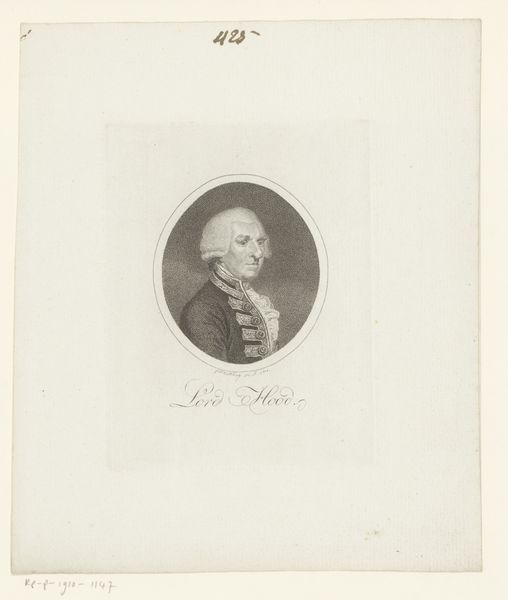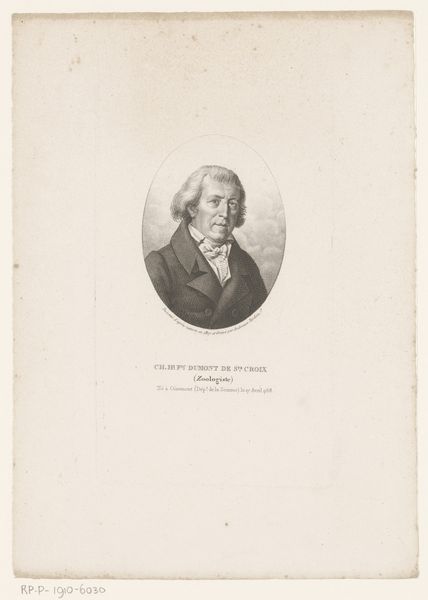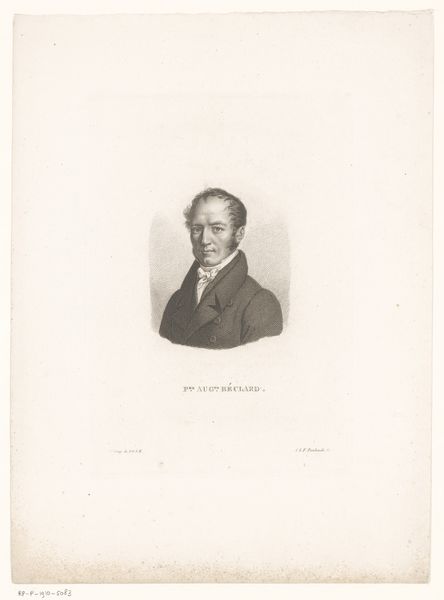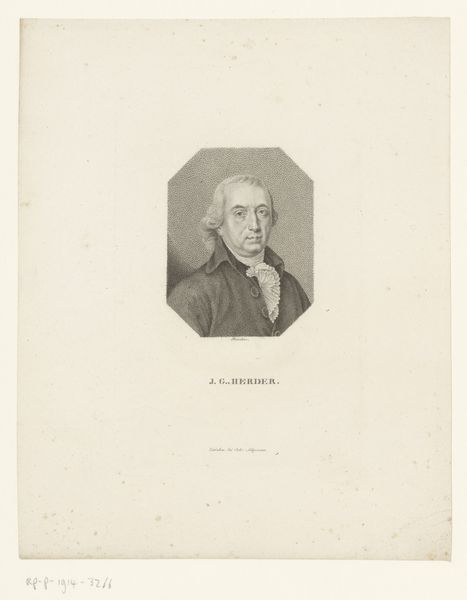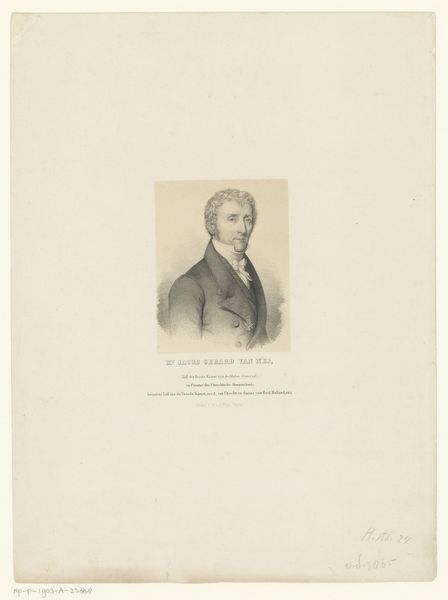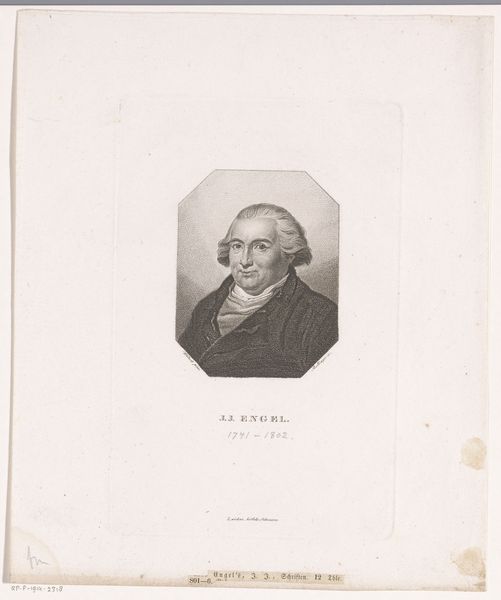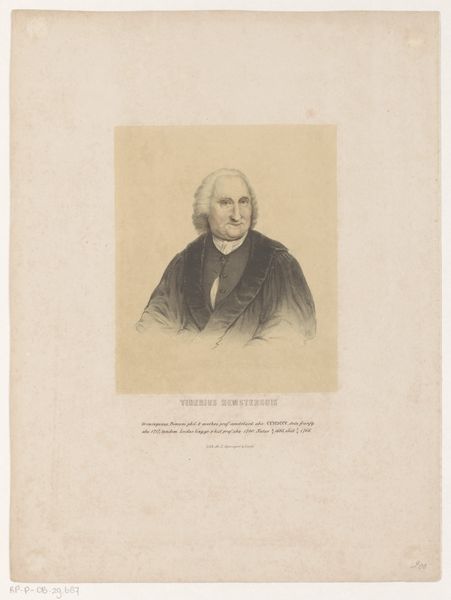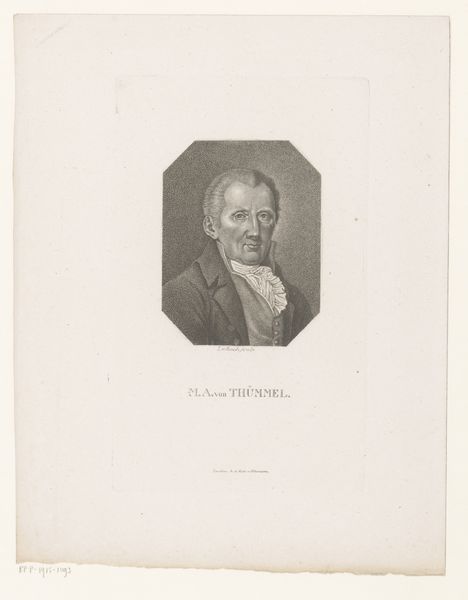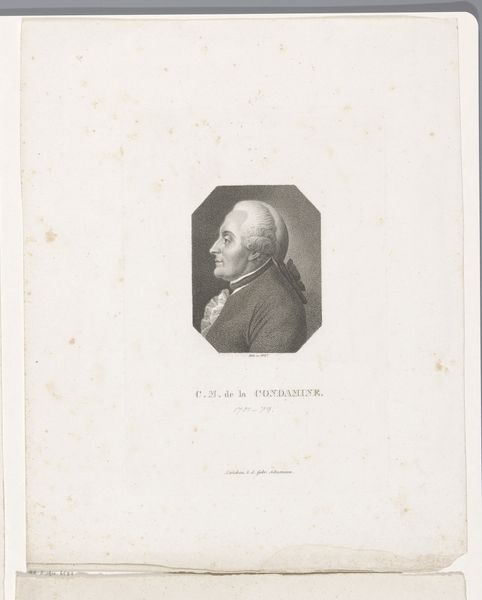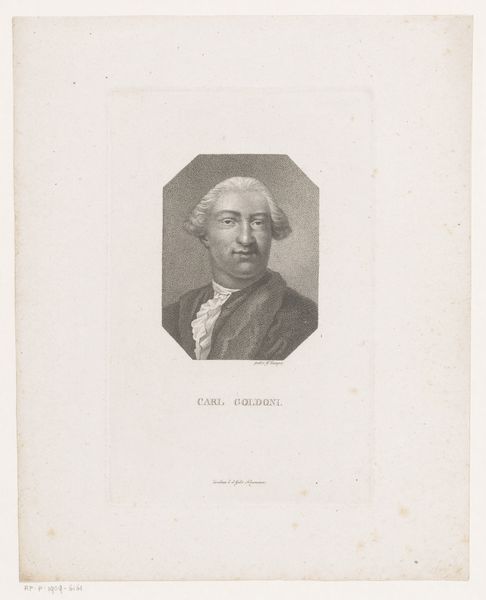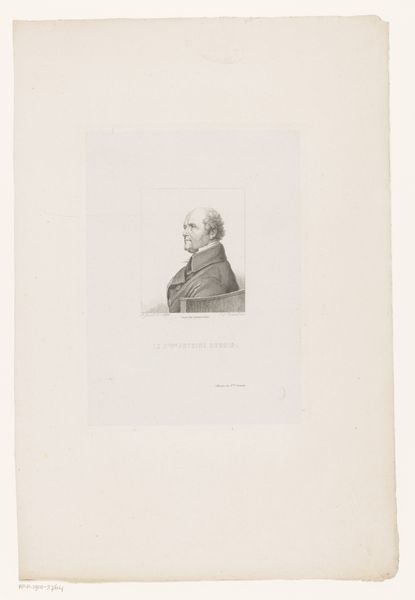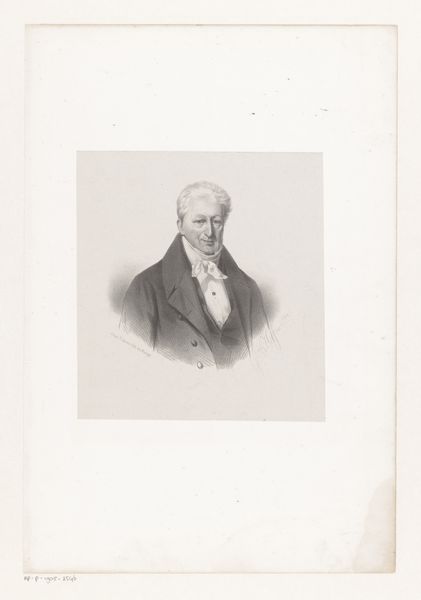
print, paper, engraving
#
portrait
#
neoclacissism
#
light pencil work
# print
#
paper
#
line
#
engraving
Dimensions: height 182 mm, width 120 mm
Copyright: Rijks Museum: Open Domain
Curator: Let’s discuss this print, "Portret van Johann Elert Bode," dating from 1818 to 1832, attributed to Anton Wachsmann. It's an engraving on paper. Editor: The delicate lines immediately catch my eye. It's sparse, almost austere, yet there's a softness to the way light falls across Bode's face and hair. It suggests refinement but also, perhaps, a certain social standing. Curator: Indeed. This work is a portrait of Johann Elert Bode, a prominent astronomer known for popularizing Bode's Law, a hypothesis regarding the spacing of planets. Portraits like this played a crucial role in shaping public perception, cementing the status and legacy of important figures in the early 19th century. This aligns with the Neoclassical art movement and the visual encoding of Enlightenment ideals through images circulated widely via print media. Editor: It's interesting to consider the deliberate choice of engraving. The reproducibility allowed for a wider audience, creating an almost standardized image. We must consider too, the skills involved – the labor intensive process. I imagine each line carefully etched to capture detail but also with some intention of projecting status – this was about more than a mere likeness; this was about creating a lasting public image, through an interesting industrial process for art-making in the early 19th century. Curator: Exactly! The portrait reflects the societal emphasis on reason, order, and the celebration of intellectual achievement prevalent in the Neoclassical period. Also note the composition, very simple: the lines create very soft shadows. The image-making of scientists and other notables, and distribution using affordable material processes such as engraving, was part of creating cultural consensus around these public figures and ideas. Editor: It makes you think about the choices available back then. Paper wasn’t an unlimited resource, so the paper type and dimension had its own value and influence in defining what was the expected quality. In many ways it connects directly to labour conditions around paper production. Thinking about materials, skills, process… all point at the work which often remains hidden from many art history considerations, but it is at the centre of my work. Curator: It's a poignant reminder of how the intersection of art, science, and social ideals shaped the cultural landscape of the time. I'll leave with that in mind, how accessible knowledge was considered and distributed. Editor: Absolutely, and it shows us how even the choice of materials and labor-intensive processes speaks volumes about artistic intention and audience expectations.
Comments
No comments
Be the first to comment and join the conversation on the ultimate creative platform.
